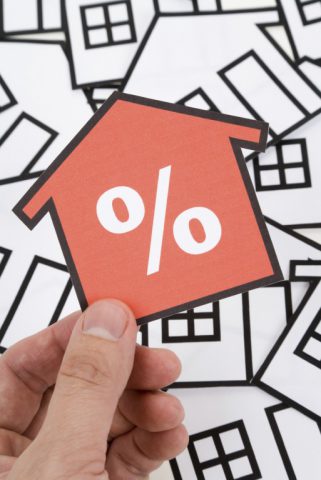Annual House Price Growth Eased in October, Official Figures Reveal
Em Morley - December 12, 2017Annual house price growth eased to an average of 4.5% in October, according to the latest official figures from the Office for National Statistics (ONS) and Land Registry.
In September, the rate of growth stood at an average of 4.8%, having slowed since mid-2016.
Across the UK, the average house price was £224,000 in October. This is £10,000 higher than in October last year, but £1,000 lower than in September.
The main contribution to the rise in house prices in the year to October came from England, where the average property value increased by 4.7% in the 12 months to October to reach £241,000. Wales saw house prices grow by an average of 4.5% to stand at £153,000, while Scotland experienced an average rise of 2.8%, taking the typical property value to £144,000. In Northern Ireland, the average house price stands at £132,000, following a 6.0% increase over the year to the third quarter (Q3).
On a regional basis, London continued to offer the highest average house price in October, at £481,000, followed by the South East and the East of England, which stood at £322,000 and £289,000 respectively. The lowest average price was still found in the North East, at £127,000.
The East Midlands showed the highest annual growth in October, at an average of 7.0%. This was followed by the South West (6.7%) and the East of England (6.1%). The lowest annual growth was recorded in London, where prices rose by just 2.1% over the year, followed by the North East, at 2.4%.

Annual House Price Growth Eased in October, Official Figures Reveal
The local authority with the largest annual growth was Swale, where prices rose by an average of 15.5% over the 12 months to October, to stand at £255,000. The lowest annual growth was seen in Hartlepool, where prices dropped by an average of 6.1%, to hit £99,000.
Low numbers of sales transactions in some local authorities and London boroughs can lead to volatility in the series. While efforts are made to account for this volatility, the change in price in these local levels can be influenced by the type and number of properties sold in any given period.
In October, the most expensive borough to purchase a property in was Kensington and Chelsea, where the average home cost £1.2m. In contrast, the cheapest area to buy a property was Burnley, at an average of £76,000.
Comments
James Lockett, the Founder and CEO of online estate agent eMoov.co.uk, responds to the figures: “A marginal cool in monthly price growth and one that is almost certainly a minor seasonal frostbite rather than signs of a further market freeze.
“While there has been a fall in the number of fresh listings coming onto the market, as many now wait until after Christmas before selling, the number of actual transactions has continued to increase at a healthy rate.
“This would suggest that it is business as usual for those already going through the process, but sellers are perhaps adjusting their expectations ever so slightly where price is concerned, in order to secure a sale this side of Christmas in tougher market conditions and to a tighter timeline.”
The CEO and Founder of online mortgage broker Trussle, Ishaan Malhi, also comments: “The limited supply of housing in the UK is continuing to push up house prices, particularly outside London. While this is good news for current homeowners, it’s less so for first time buyers struggling to save for a deposit. House prices are now estimated to be over seven times the average annual salary, which is a huge sum of money for those looking to get onto the property ladder.
“The cut to Stamp Duty will provide some welcome relief for those under 30 who are ready to buy now. However, it’s possible that prices will rise more quickly over the next year as the market responds to the policy change. With this in mind, those ready to buy should do so soon to take advantage of one of the many competitive rates currently available.”
Lucy Pendleton, the Founder Director of independent estate agent James Pendleton, continues: “While Britain’s fringes keep on growing apace, the capital’s exhausted housing market has dropped to one knee to catch a breather.
“The East Midlands and South West have still got their dancing shoes on, while the traditional trailblazer London continues to lag behind and has been cooling at below the UK’s average growth rate for nearly a year now.
“In fact, that slowdown accelerated in the capital in October, where homeowners were already being hit over the head by inflation. Londoners are losing money in real terms because inflation is running at 3%.
“When the industry talks about the north-south divide, it’s always in the context of the south doing better, but not so this year and that trend continues. The economic ripple effect, fuelled by low rates, began in London, but is now washing up on the shores of every corner of the UK.
“This house price growth was not really being powered by the threat of further rate rises. First timers and those upsizing are focusing on where they want to be two or three years down the line. Even with deteriorating supply supporting prices, it’s a case of if not now, then when?”
The Senior Economist at PwC, Richard Snook, adds: “The headline measure from the Budget on 22nd November was to scrap Stamp Duty for most first time buyers. This is likely to provide a small boost to the market in 2018, but today’s data suggest that uncertainty linked to Brexit may be leading to a wider market slowdown. Our main scenario for 2018 is for UK price growth of 3-4%, but we consider risks are weighted to the downside.”
